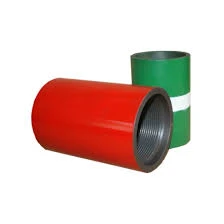- Afrikaans
- Albanian
- Amharic
- Arabic
- Armenian
- Azerbaijani
- Basque
- Belarusian
- Bengali
- Bosnian
- Bulgarian
- Catalan
- Cebuano
- Corsican
- Croatian
- Czech
- Danish
- Dutch
- English
- Esperanto
- Estonian
- Finnish
- French
- Frisian
- Galician
- Georgian
- German
- Greek
- Gujarati
- Haitian Creole
- hausa
- hawaiian
- Hebrew
- Hindi
- Miao
- Hungarian
- Icelandic
- igbo
- Indonesian
- irish
- Italian
- Japanese
- Javanese
- Kannada
- kazakh
- Khmer
- Rwandese
- Korean
- Kurdish
- Kyrgyz
- Lao
- Latin
- Latvian
- Lithuanian
- Luxembourgish
- Macedonian
- Malgashi
- Malay
- Malayalam
- Maltese
- Maori
- Marathi
- Mongolian
- Myanmar
- Nepali
- Norwegian
- Norwegian
- Occitan
- Pashto
- Persian
- Polish
- Portuguese
- Punjabi
- Romanian
- Russian
- Samoan
- Scottish Gaelic
- Serbian
- Sesotho
- Shona
- Sindhi
- Sinhala
- Slovak
- Slovenian
- Somali
- Spanish
- Sundanese
- Swahili
- Swedish
- Tagalog
- Tajik
- Tamil
- Tatar
- Telugu
- Thai
- Turkish
- Turkmen
- Ukrainian
- Urdu
- Uighur
- Uzbek
- Vietnamese
- Welsh
- Bantu
- Yiddish
- Yoruba
- Zulu
Understanding Tubing and Casing in Oil and Gas Drilling Operations
Tubing and Casing Essential Components in Oil and Gas Drilling
In the oil and gas industry, the extraction of hydrocarbons from beneath the Earth’s surface is a complex process that requires several critical components and techniques. Among these, tubing and casing play pivotal roles in ensuring that drilling operations are safe, efficient, and environmentally sound. This article delves into the definitions, functions, materials, and the overall importance of tubing and casing in the drilling process.
Definitions and Functions
Casing refers to the series of steel pipes that are installed in the drilled hole to provide structural support and stability to the wellbore. The casing prevents the walls of the well from collapsing under the pressure of surrounding rock and soil. It also serves as a barrier to isolate various underground formations, preventing the mixing of fluids from different geological layers. Additionally, casing helps protect the freshwater aquifers present near the surface, thereby safeguarding groundwater resources.
Tubing, on the other hand, is the smaller-diameter pipe that runs inside the casing. It is used to transport the oil or gas from the reservoir to the surface. The tubing is crucial during the production phase, as it allows for efficient and controlled extraction of hydrocarbons. This system is designed to withstand high pressure and corrosive conditions prevalent in the wells.
Materials Used
Both tubing and casing are typically made of high-strength alloy steel, which is designed to withstand the immense pressures and corrosive environments found in drilling operations. The materials are often specially coated to enhance their resistance to corrosion and wear. Additionally, the dimensions and thickness of both tubing and casing are selected based on several factors, including well depth, expected pressure, and the nature of the hydrocarbons being extracted.
Importance in Drilling Operations
tubing and casing

The importance of tubing and casing cannot be overstated. In the drilling phase, casing is installed after the borehole is drilled to a certain depth. This crucial step ensures the stability of the well and protects the integrity of the surrounding formations. The casing job is a decisive moment in drilling operations, as improper installation can lead to catastrophic failures, including blowouts or collapse of the wellbore.
Once the well is properly cased, tubing is inserted to facilitate production. One of the advantages of using tubing is that it can be easily removed and replaced if necessary, allowing operators to conduct maintenance or modifications without extensive intervention in the overall well structure.
Environmental and Safety Considerations
With increased scrutiny on environmental safety in oil and gas operations, tubing and casing designs are evolving to mitigate risks. Advanced sealing technologies and the use of environmentally friendly materials are becoming more common, helping to ensure that unforeseen leaks do not occur. Regulatory frameworks also dictate the standards for casing installation to minimize risks associated with groundwater contamination, making it a critical part of environmental stewardship in the industry.
Innovations and Future Directions
As technology progresses, innovations in tubing and casing materials and techniques are being explored. Techniques such as the use of composite materials and enhanced manufacturing processes can improve the strength-to-weight ratio of these components, making them more efficient and environmentally friendly. Furthermore, advancements in real-time monitoring technologies allow for better management of the well’s integrity, ensuring that any potential issues can be addressed promptly.
Conclusion
In summary, tubing and casing are indispensable components of oil and gas drilling operations. Their primary roles in providing structural integrity, facilitating hydrocarbon transport, and ensuring environmental safety highlight their significance in the industry. As the demand for energy continues to grow, and as environmental concerns become increasingly prominent, the evolution of tubing and casing technologies will play a crucial role in shaping the future of drilling practices, ensuring that they remain safe, efficient, and sustainable.
-
Tubing Pup Joints: Essential Components for Oil and Gas OperationsNewsJul.10,2025
-
Pup Joints: Essential Components for Reliable Drilling OperationsNewsJul.10,2025
-
Pipe Couplings: Connecting Your World EfficientlyNewsJul.10,2025
-
Mastering Oilfield Operations with Quality Tubing and CasingNewsJul.10,2025
-
High-Quality Casing Couplings for Every NeedNewsJul.10,2025
-
Boost Your Drilling Efficiency with Premium Crossover Tools & Seating NipplesNewsJul.10,2025







